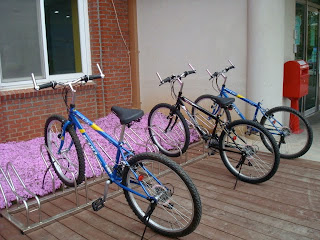
Now suddenly it's an international crisis, with Secretary of State Hilary Clinton visiting China and presenting the evidence against NK, and recently visiting Seoul as well. Most news coverage would make it seem that war is imminent. Well, technically the Koreas are still at war, so I guess active war would be more accurate. I wish I had more insight to add, but as I've said before, I came here with very little historical and political background knowledge. I've done a lot more studying of Latin America could tell you way more about Vicente Fox, Andres Manuel Lopez Obrador, Michelle Bachelet, Evo Morales or Hugo Chavez than I could about Lee Myung-bak or Kim Jong-il. I've been trying to do a lot of reading up about the situation and of course there is a wide range of analysis. A recent opinion piece from the New York Times says South Korea's ambivalence and lack of action on the situation is dangerous and outdated. Then on the other hand, in this interview on Democracy Now the professor/author says every one is over-reacting and these military skirmishes are nothing new. There have been several other ship-sinkings on both sides in the last few decades that didn't lead to any more aggession.

I will admit I have had a few moments of fear and imagining the worst, wondering 'What if?' What if Seoul were attacked, how would I leave the country? A Canadian teacher friend here is going home almost a month early because her parents were very concerned about the conflict and felt more comfortable having her back ASAP. It's an uneasy situation both for foreigners and for Koreans who are still incredibly tied together ethnically and linguistically on both sides of the border. But on the upside of all of this- EVERY SINGLE Korean that I ask about it doesn't seem worried in the least. And remember, 2 years of military service is mandatory for all Korean men, so every Korean male I have asked was in the service at some point. They say it is just part of the historical North/South pattern of tension, and that it will pass and there will be no fighting. So that reassures me for the most part.
And for those of you still worried, my last word in the way of self-preservation is to tell you that I live fairly far from the border, and there is a huge US Air Force base right next to Gunsan.
I did recently crash into a pedestrian while on my bike, and also got some tomato starts stolen from garden... and I'm praying that that will be the extent of danger for me in Korea.





































